The Mississippi River is not only one of the largest river systems in North America, but it is also one of the most significant. This is because the river has many functions that facilitate convenience and basic survival for people and wildlife. Additionally, the waterway transports substantial U.S. commodities like cereals, oil, gas, and coal. But apart from these uses, is the Mississippi River also a habitable environment for animals? The answer to that is a big yes!
Various animals thrive beneath the river and along its shores. Of these animals, what birds call the Mississippi River home? This article lists 15 of the best-known birds you can find surrounding the river.
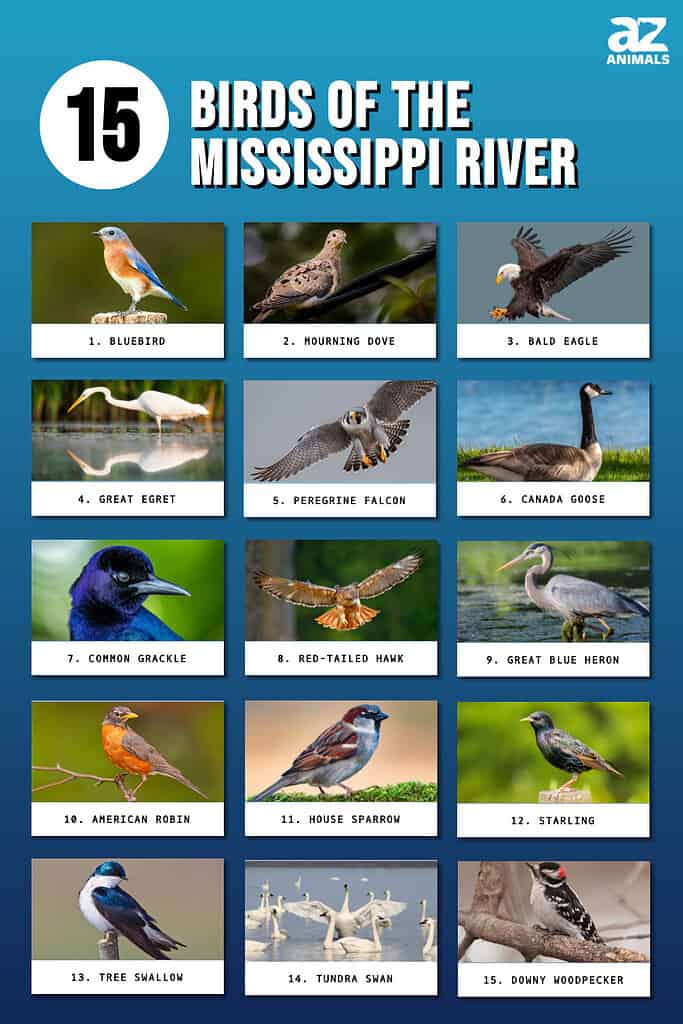
1. Bluebird
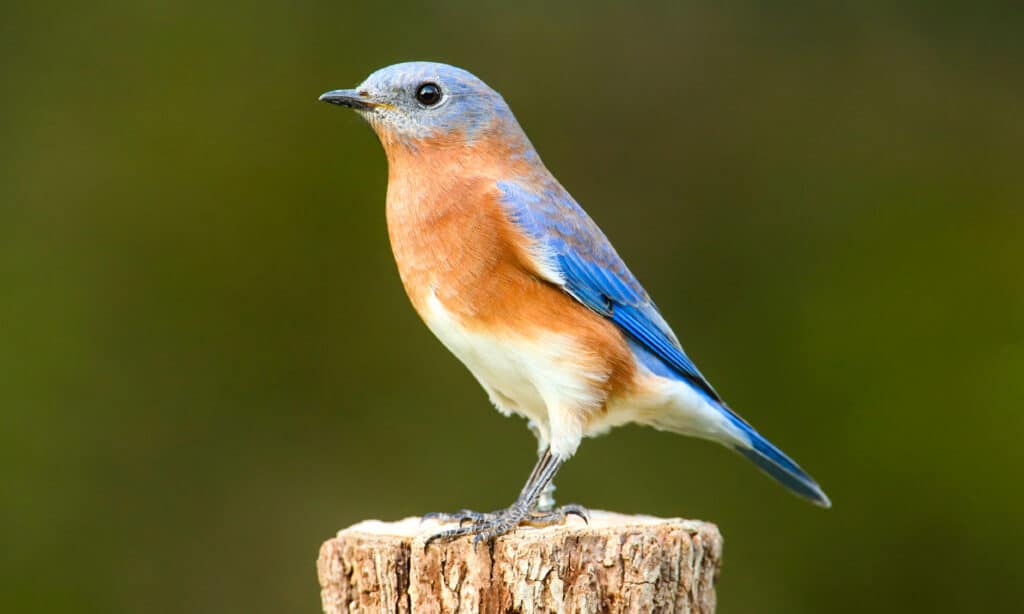
Eastern bluebirds are favorites among birdwatchers since they are often easy to locate.
©Steve Byland/Shutterstock.com
This charming, vivid blue bird has long been a favorite of birders, city dwellers, and farmers due to its upbeat song and voracious hunger for insects. The eastern bluebird is a favorite among birdwatchers since it is conspicuous and often easy to locate. Compared to many other species, they are less threatened, increasing their numbers.
An eastern bluebird’s typical length is seven inches, and its wing span varies from 9.8 to 12.6 inches. A lighting illusion causes bluebirds to appear blue even though they are not genuinely blue.
2. Mourning Dove

The mourning dove is a medium-sized, graceful bird with a pinkish-gray underside and light gray-brown upper parts.
©Jay Gao/Shutterstock.com
The mourning dove, one of the most widespread birds in North America, is well known for its instantly recognized silhouette, somber call, and associations with peace, loss, loved ones, friendship, and companionship, among other things. Although cat predation poses the greatest threat to it, the mourning dove population is growing.
The mourning dove is a medium-sized, graceful bird with a pinkish-gray underside and light gray-brown upper parts. The call of the mourning dove is a delicate, sorrowful sound that is frequently and readily mistaken for an owl’s.
3. Bald Eagle

Bald eagles are known for their powerful wings that allow them to soar miles in all directions.
©PHOTOOBJECT/Shutterstock.com
The bald eagle is among the most beloved animals in North America and a wonderful image of strength and power. Both novices and experts are enthralled by how elegantly it flies through the air. It was once in danger of going extinct, but it has since recovered sufficiently to be a remarkable conservation success story.
The number of bald eagles in the Mississippi National River and Recreation Area is increasing. Along the 72-mile stretch of river that flows through the Mississippi National River and Recreation Area in 2015, there were 46 active bald eagle nests recorded.
Apart from being the only sea eagle species that exclusively inhabits North America, bald eagles are known for their powerful wings that allow them to soar miles in all directions while riding thermal currents and powerful updrafts.
4. Great Egret
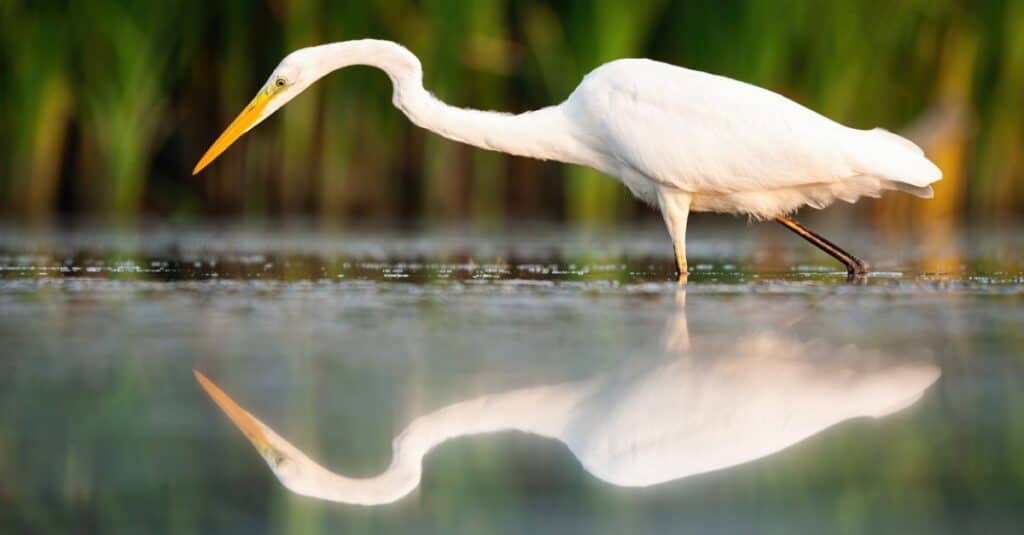
Great egrets can often be spotted in areas close to tropical lakes, marshes, ponds, swamps, or wetlands.
©WildMedia/Shutterstock.com
Great egrets live their entire lives close to swamps and wetlands. Thanks to their legs, they can readily wade through the shallow water in quest of food. Great egrets occasionally compete for mates even though they live in colonies.
When flying, the great egret retracts its long, curving neck. They forage in shallow water most of the day before assembling in their nest at dusk.
Great egrets can often be spotted in areas close to tropical lakes, marshes, ponds, swamps, or wetlands, particularly with substantial reed beds and trees.
5. Peregrine Falcon
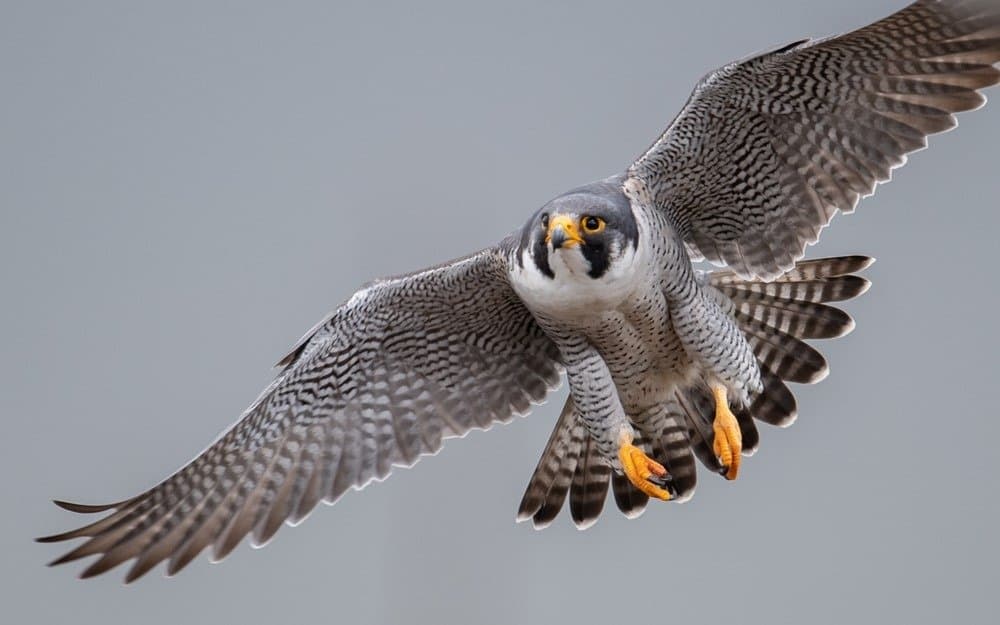
Peregrines are enormous falcons, measuring one to two feet in body length.
©Harry Collins Photography/Shutterstock.com
One of the most common and potent predatory birds on the planet is the peregrine falcon. Despite their high levels of migration, these birds have superb homing instincts that enable them to return year after year to the same nesting locations.
Peregrines are enormous falcons, measuring one to two feet in body length and over four feet in wingspan.
6. Canada Goose
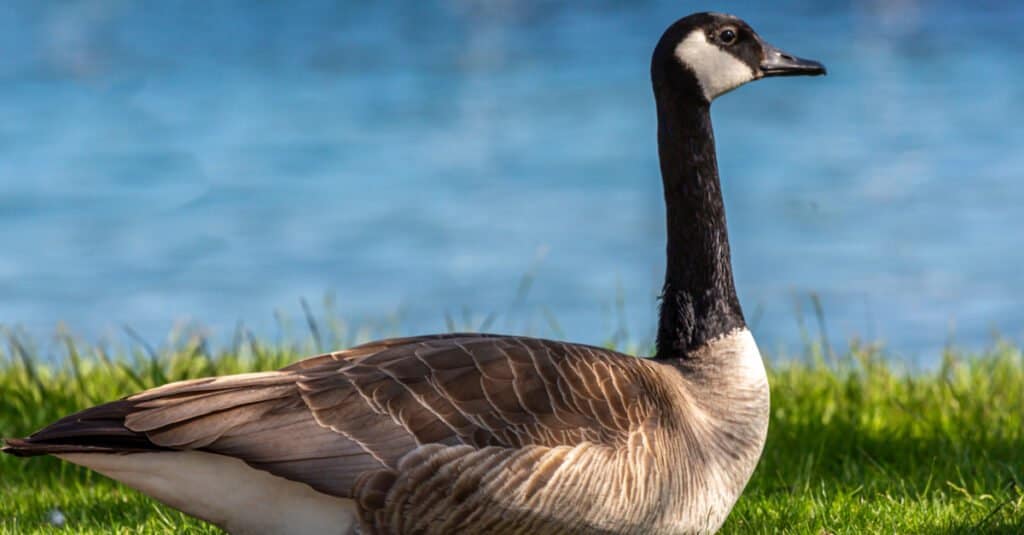
The Canada goose eats the blade, stem, and roots of the grass.
©David McIntosh/Shutterstock.com
The Mississippi National River and Recreation Area is among the many places in the Twin Cities where you may see this recognizable bird and hear its loud honking noises. The big bird known as Canadian goose, or the Canada goose, is found in North America year-round but migrates to numerous remote locations during the winter.
7. Common Grackle
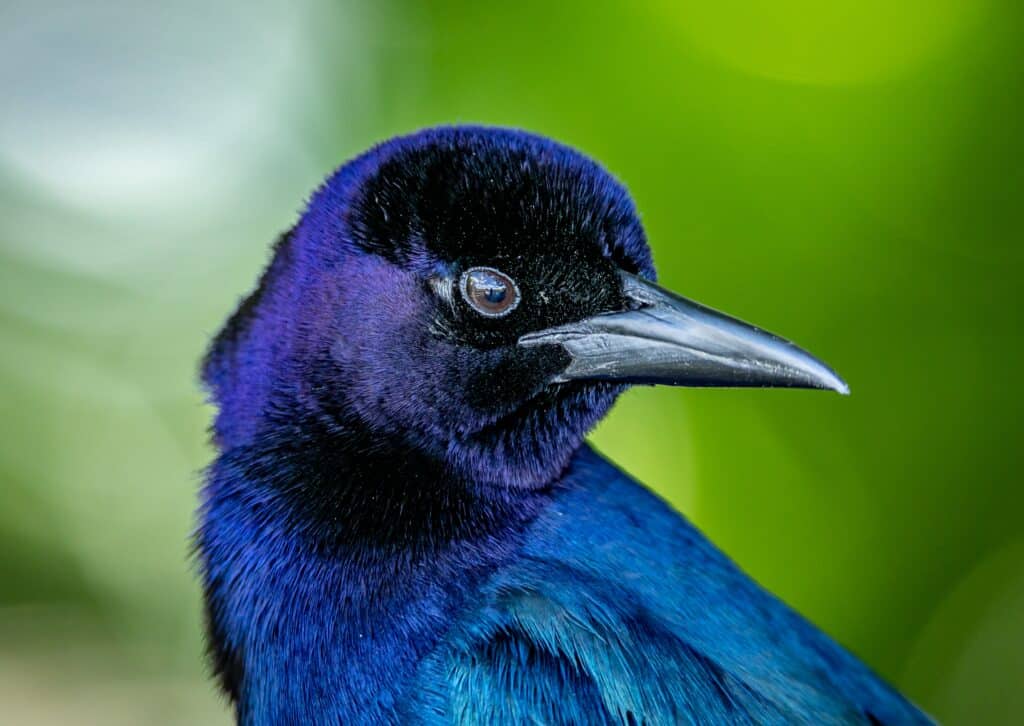
The common grackle forages on the ground, in shallow water, or shrubs and trees.
©Holly S. Cannon/Shutterstock.com
The common grackle is a sizable blackbird native to North America. Males have glossy purple heads and bodies of a bronze sheen, while the females are smaller, have shorter tails, and are less iridescent. The common grackle is a permanent resident or a transient migrant in Mexico, Canada, and the United States. Most of this bird’s range is where it permanently lives. However, in the winter, the northern populations move to the southern U.S. As woods are cut down or opened up, the grackle territory extends to the west and north. Unfortunately, the grackle population is decreasing drastically.
This species lives in open rural places, including groves, farms, and the borders of forests. These noisy, sociable birds converse while perched atop trees and power wires.
8. Red-Tailed Hawk
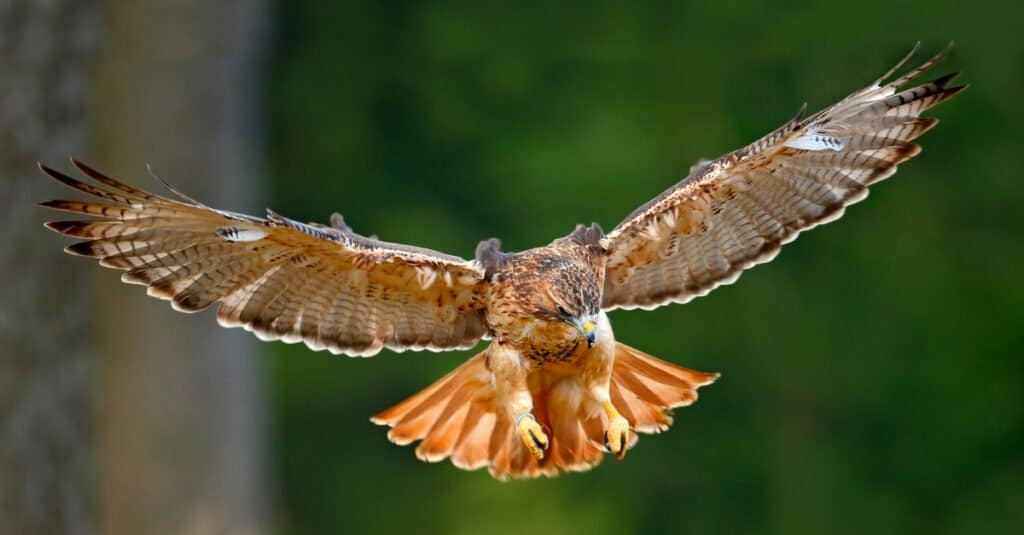
The red-tailed hawk’s distinct tail feathers are a result of the molting process.
©Ondrej Prosicky/Shutterstock.com
A common raptor in southern Minnesota, the red-tailed hawk, has a vast range that stretches from South America to Alaska.
Large raptors known as red-tailed hawks can be found in almost all of North America. They can have an extraordinarily diverse range of plumage, but their stunning red tails makes them easily identifiable. Red-tailed hawks have extraordinarily good eyesight and are exceptional hunters and intelligent animals whose diets reflect their opportunistic lifestyles.
9. Great Blue Heron
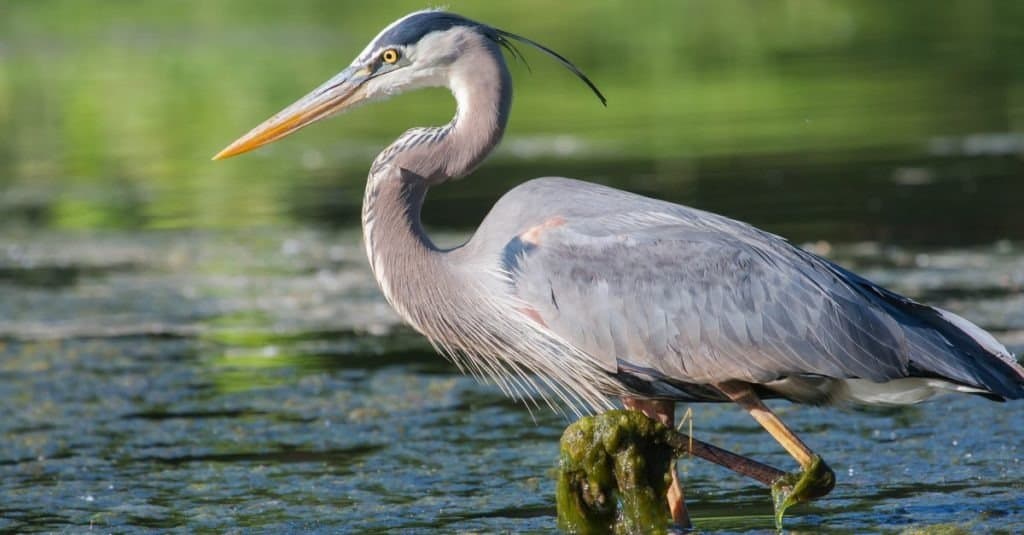
The largest heron in North America is the great blue heron.
©Joseph Scott Photography/Shutterstock.com
It is usual to spot this long-legged, bluish-gray wader chasing prey along the Mississippi River and the borders of shallow delta wetlands in the Mississippi National River and Recreation Area.
The charismatic great blue heron is the biggest heron in North America, standing about four feet tall and having a wingspan of around six feet. They are frequently spotted wading in shallow waterways next to roads in the southern United States, possibly searching for food. Typically, marshes, rivers, and shorelines are where one can find these birds.
10. American Robin
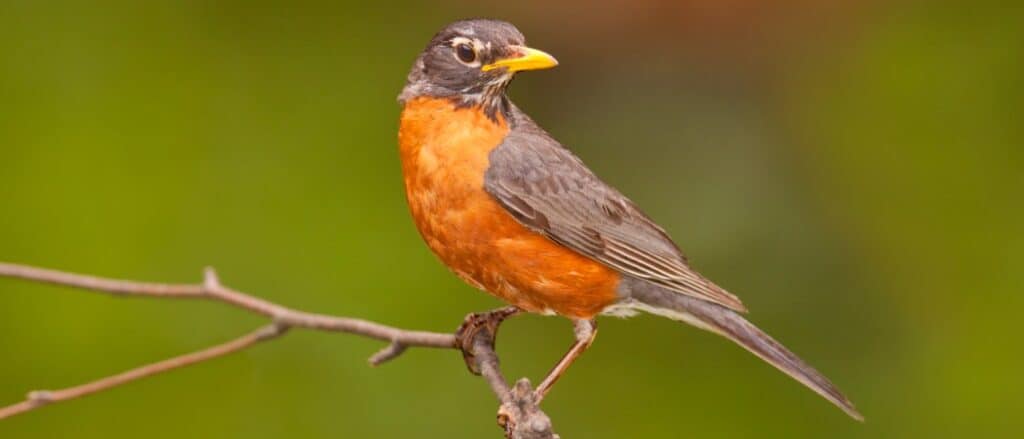
American robins are well-known in suburban settings and move in groups during the day.
©iStock.com/Silfox
The American robin is a common bird found all over North America, including in suburban settings, and known for its distinctive vivid orange chest. They are among the thrushes‘ most abundant individuals and unquestionably the most conspicuous in the group of enigmatic birds. In Minnesota, spring and summer robins are seen on city lawns and in dense woodlands.
You can successfully spot them in the Mississippi National River and Recreation Area’s waterways throughout the winter. They move in groups during the day, and they migrate south throughout the winter and north in the spring.
11. House Sparrow
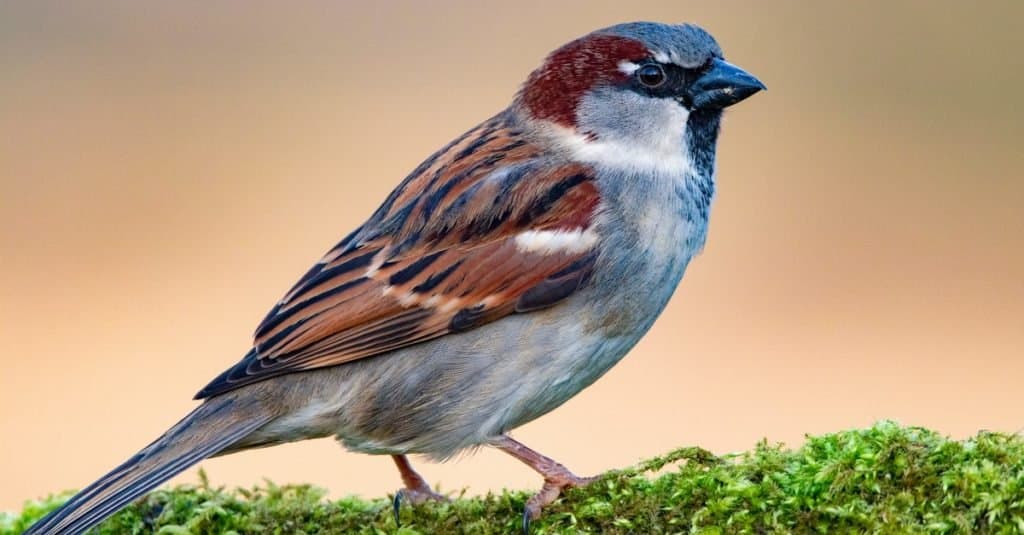
The house sparrow is most frequently seen in human-modified habitats.
©Craig Howman/Shutterstock.com
One introduced species that has thrived greatly in North America is the house sparrow. It is a small bird with short legs, a thick bill, pale gray or buff plumage, and brown wings that have black streaks. Most house sparrow sightings in the Mississippi National River and Recreation Area are in and near populated areas, such as farms and cities. As its name suggests, the house sparrow is most frequently seen in human-modified habitats, such as urban, suburban, and agricultural settings. It is less likely to be detected in places with no people around.
12. Starling
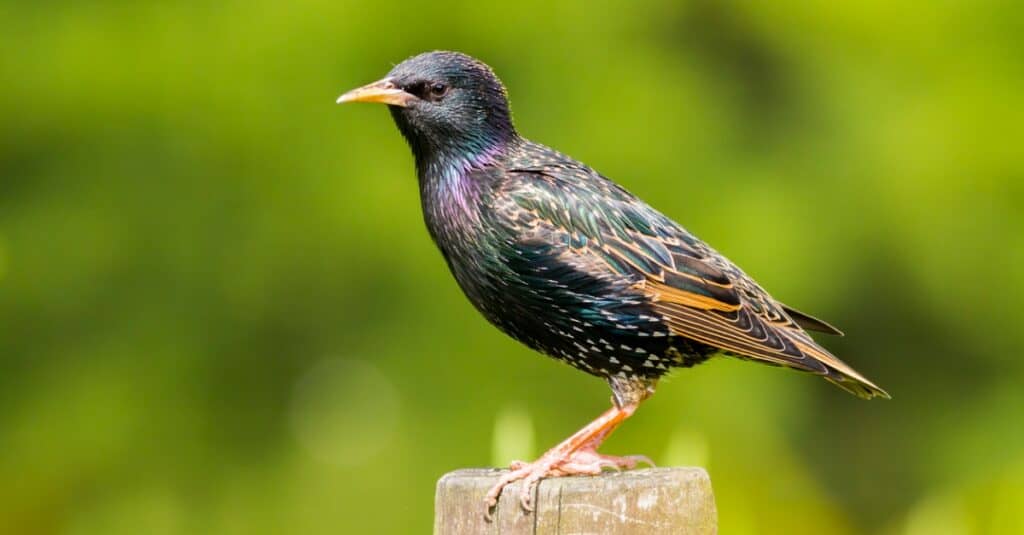
European starlings have glossy, iridescent feathers.
©iStock.com/chris2766
The starling was a species brought from Europe to North America. Only around 100 birds were initially released, but they quickly expanded from Central Park in New York to southeastern Minnesota by 1929. They spread all over Minnesota within a decade. They are widely dispersed throughout the nation and are especially prevalent in urban areas. The European Starling is colored a jet black with some green or blue markings. To watch the European starling, you must visit parks, lawns, fields, and other wide-open spaces.
13. Tree Swallow
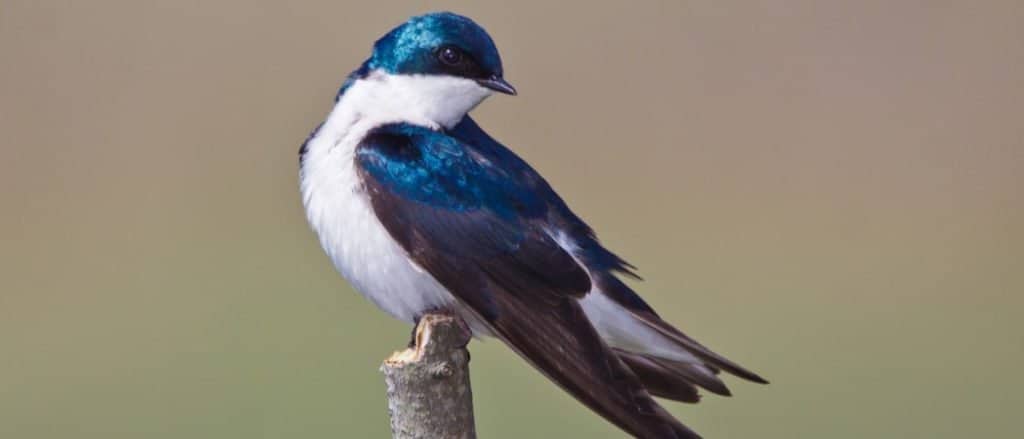
The tree swallow is among the most prevalent songbirds in North America.
©Elliotte Rusty Harold/Shutterstock.com
The flocks of these lovely birds in the fall can be enormous. In Sherburne County, MN, north, and west of the Mississippi National River and Recreation Area, one flock was reported to have 20,000 birds. The tree swallow is among the most prevalent songbirds in North America and is easily recognized by its iridescent color. The tree swallow has benefited from the popularity of other songbirds like the bluebird and house sparrow since they all prefer the same artificial nesting sites.
14. Tundra Swan

The smallest swan in North America is the tundra swan.
©hay_mn97/Shutterstock.com
The tundra swan’s flight path crosses the Mississippi River over the Mississippi National River and Recreation Area as it travels southeast. Tundra swans’ mellow sounds can be heard at night as they travel along the Mississippi River, and they are frequently observed flying high overhead. Even though they are the country’s smallest swans, tundra swans are fairly big animals.
15. Downy Woodpecker
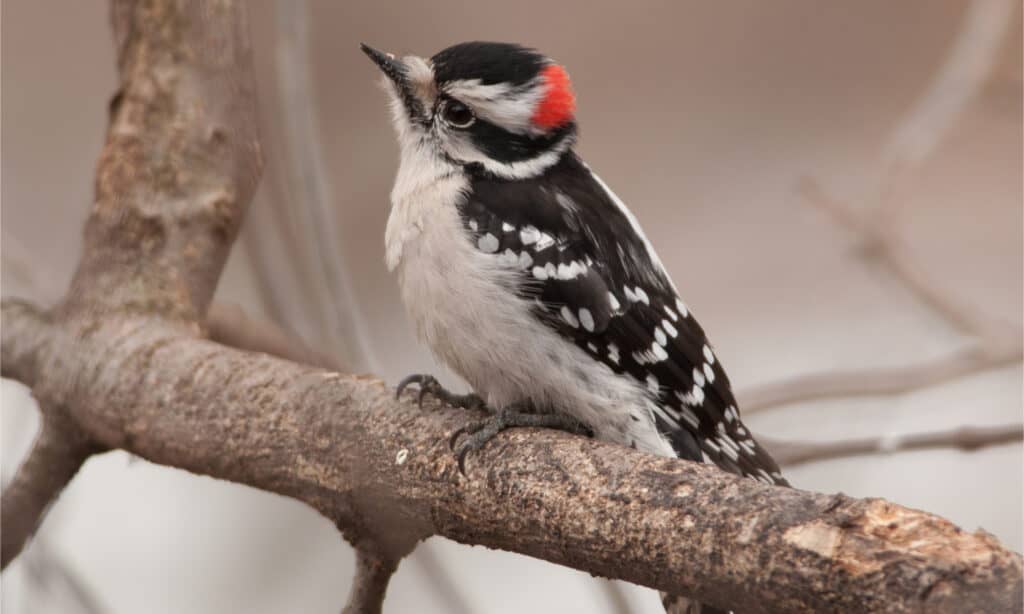
Downy woodpeckers are found in deciduous forests.
©Gerald A. DeBoer/Shutterstock.com
These tiny woodpeckers are frequently seen in gardens and at bird feeders. They frequently join flocks of other birds to engage in acrobatic foraging maneuvers and frequently balance on little branches and cables. In North America, downy woodpeckers are native to deciduous forests.
Although this bird is mostly black, its head, wings, and bottom are white. Males are characterized by a red patch on the back of their heads.
Summary of 15 Birds of the Mississippi River
Here’s a recap of the 15 bird species living in the area of the Mississippi that we took a look at.
| Number | Bird Species | Appearance |
|---|---|---|
| 1 | Bluebird | Lighting illusion causes bluebirds to appear blue |
| 2 | Mourning Dove | Medium-sized, with a pinkish-gray underside and light gray-brown upper parts |
| 3 | Bald Eagle | Known for their powerful wings that allow them to soar miles |
| 4 | Great Egret | Uses legs to wade through shallow water in quest of food; when flying, retracts its long, curving neck |
| 5 | Peregrine Falcon | Measure 1-2 feet in body length and over 4 feet in wingspan |
| 6 | Canada Goose | Big bird known for loud honks |
| 7 | Common Grackle | Males have glossy purple heads and bodies of a bronze sheen; females are smaller and are less iridescent |
| 8 | Red-Tailed Hawk | Extraordinarily diverse range of plumage; stunning red tails makes them easily identifiable |
| 9 | Great Blue Heron | Biggest heron in North America, standing about 4 feet tall with a wingspan of around 6 feet |
| 10 | American Robin | Known for its distinctive vivid orange chest |
| 11 | House Sparrow | Small with short legs, thick bill, pale gray or buff plumage, and brown wings with black streaks |
| 12 | Starling | Jet black with some green or blue markings |
| 13 | Tree Swallow | Easily recognized by its iridescent color |
| 14 | Tundra Swan | While fairly large, this is the smallest type of swan in the U.S. |
| 15 | Downy Woodpecker | Mostly black with a head, wings, and bottom that are white; the male has a red patch on the back of his head |
The photo featured at the top of this post is © Harry Collins Photography/Shutterstock.com
Sources
- National Park Service, Available here: https://www.nps.gov/miss/learn/nature/birds.htm
- National Park Service, Available here: https://home.nps.gov/miss/learn/nature/what_bird.htm
- LMRCC, Available here: https://www.lmrcc.org/outdoor-recreation/birding/
Thank you for reading! Have some feedback for us? Contact the AZ Animals editorial team.






